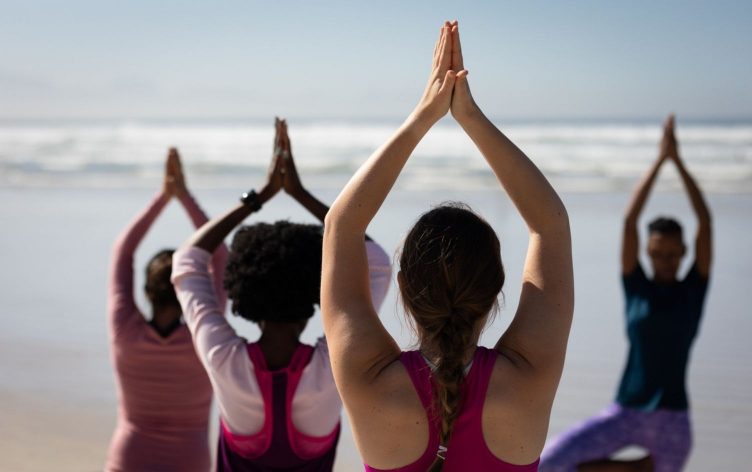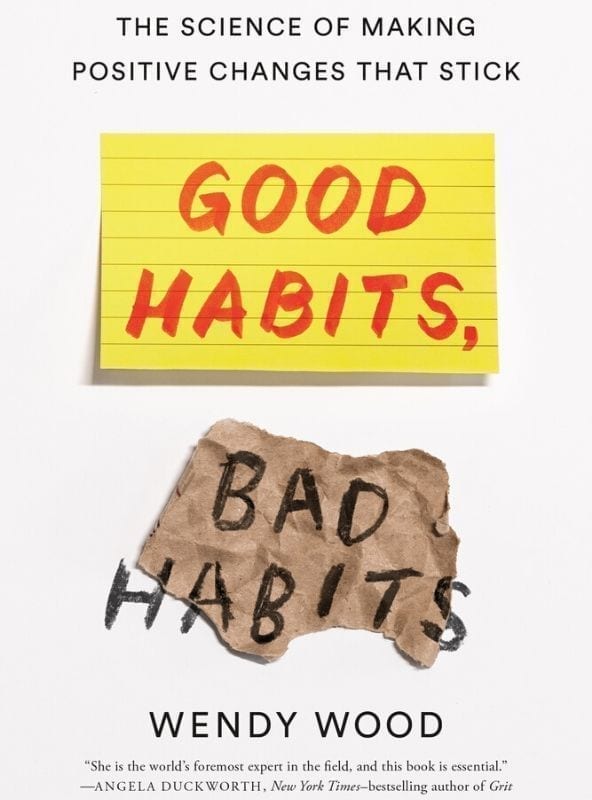
How to Form Good Habits (According to Science)
This time of year, our thoughts turn to habits. Which good ones to keep to help us reach those all-important resolutions and which bad ones to forget. After all, as psychologist Wendy Wood, PhD, author of “Good Habits, Bad Habits” notes, 10% of people who resolved to get healthier last year will be resolving to do so again this year.
In her new book, she details the factors that drive us to make good and bad decisions every day. The work reflects her background as a social scientist at the University of Southern California, but it’s written in an accessible, even fun, conversational tone, that will have you eager to read the key insight awaiting you on the next page.
We spoke with Wood about the book, and came away with five key ways to develop good habits in the year ahead — and, just as important, how to make them stick.

ENVIRONMENT IS KEY
It turns out timing isn’t the only thing. One of the biggest factors in your decision making is very much linked to location and proximity. This flies in the face of what many of us think, which is that knowledge or willpower drive us to form good habits all on their own. Here’s an example: In a study cited by Wood, people in impoverished neighborhoods were far more likely to eat fruits and vegetables after farm stands were introduced near where they lived. Education campaigns did not produce this kind of change; making healthy food more convenient did.
A change of scenery can also help. For example, Wood cites more research showing that if your gym is 3 1/2 miles away, you’ll go five times a month. If it’s more than 5 miles away, you’ll only go once a month. She says, “we assume if we’re motivated that of course we’ll go to the gym, but we won’t. What will keep us going is if it becomes something effortless.” You don’t need to pick up and move next door to your trainer, but you can focus on finding a gym (or trail or other workout location) near your work, home or other places you frequent to make it easier to get to.
Or you can be like Wood, who bought an elliptical machine to work out at home. Doing this isn’t only convenient, it can also be much cheaper — a high upfront cost, to be sure, but less expensive than paying for a gym membership over the long haul. Not to mention, it’s just steps away.
GO EASY ON YOURSELF
Too often, we intertwine healthiness with virtue. We think good people have good habits, and bad people have bad habits. Good people go for a run when they get home; bad people veg out on the couch. It becomes almost moral — fit people are virtuous, the rest of us are not. This is nonsense, Wood says. What really distinguishes those with good habits from those with bad ones is the ability to repeat certain beneficial behaviors — which, fortunately, are often self-reinforcing. (Think of that dopamine hit you get from a good workout.)
“People who seem to have high self-control are actually really good at forming habits,” Wood says. “So it’s as if, yes, they do know something that you and I may not, but it’s not through motivation and denial. It’s really through repetition, how to repeat behaviors, so they become automated.” She encourages “a bit more forgiveness about why it’s so hard to change unwanted habits and form new ones. Forgive yourself because, really, you aren’t responsible for many of your bad habits. They repeat automatically and it’s not a decision you’re making. If your conscious self was making that decision, you’d probably do something different.”
REWARD YOURSELF INSTEAD
If the book were boiled down to one sentence, it would probably be this: Make it easy, and make it rewarding. We’ve already covered the first part, but the second part is a little trickier. For many of us, a reward is a treat, and treats tend to be opposed to our goal of living healthier (Think: a cheat day, an indulgent dessert or even a day off from training).
Instead, it’s better to focus on rewards that reinforce good habits, particularly in the moment you’re practicing said habit. “The thing to keep in mind is the reward has to be there when you’re engaging with the behavior. Giving yourself a reward at the end after you’re done won’t build habits in the same way,” Wood says. “For an exercise habit, some people buy themselves fancy exercise clothes. Something they feel really good wearing.” If your goal is to eat better, you might buy yourself new cookware, or do something to make your kitchen or dining table a little more enjoyable.
Then there’s always the guiltiest pleasure of all: trash TV. That’s what Wood uses to get herself on the elliptical. She’s a fan of competitive cooking shows, which are high energy. More importantly, this treat is directly tied to the workout — she only watches them when she’s on the elliptical.
REDUCE FRICTION — OR INCREASE IT STRATEGICALLY
Less than 100 years ago, most American adults smoked. Today, hardly anyone does. The reason? A decades-long effort to increase the friction between smokers and their habits. It’s harder to buy cigarettes — when’s the last time you saw a cigarette vending machine? It’s harder to be triggered — TV ads for cigarettes were banned in 1970, and today’s print ads for smoking are basically warning labels with a tiny ad attached. Last, it’s harder to find places to actually smoke. It’s forbidden in offices, bars, restaurants, many public parks, on airplanes and more. As Wood explores in her book, it turns out forcing people to devote considerable time and energy to continuing this bad habit discourages them from indulging in it.
The reverse is true, too. Reducing friction between you and your good habits works. For example, sleep in your workout clothes so there’s one less thing to think about in the morning. Or, Wood says, you can even increase friction between you and not exercising. She talks about her son, who keeps a large cycling machine in the living room of his tiny apartment. When he gets home from his stressful job, he’s exhausted. But moving the machine so he can veg out takes more work than just getting on the bike and using it. See? Friction.
MAKE IT SOCIAL
If you’re looking to improve your environment, go easier on yourself, reward yourself and reduce friction, then find a workout partner, stat. “You make a plan to go for a workout with a friend, it’s typically easier to go than to call them and explain why you’re not going,” Wood notes. “And it’s always more fun with a friend.” Indeed. Finding someone to run or work out with creates an environmental imperative by encouraging you to find someplace convenient for both of you. Your friend will probably be more forgiving of you than you are. Talking and catching up, and witnessing your friend’s progress, is a huge reward. Again, all this, plus the accountability that comes with it, helps you form and keep good habits. (We should mention that this friend doesn’t have to be IRL — you can virtually challenge your social media and online buddies through the MyFitnessPal app.)
It’s worth noting people looking to break bad habits, particularly addictions, often find success with social groups. Those of us looking to form good habits — not just for today, but for life — should do the same.





